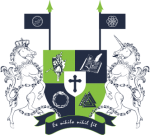Restaurant Menus and Taking Orders
One of the most important jobs in any restaurant is taking an order from a customer. If there are mistakes in the order then there will be mistakes in the preparation of the order and the customer will inevitably complain.
To be able to take an order correctly then you need to be able to understand the menu; this is not just a case of being able to read the menu but also understand what certain terms mean. For example if a dish is described as being "Au Gratin" then you need to be able to tell the customer that it either comes with a layer of cheese or breadcrumbs and is lightly grilled.
Menus tend to be set out in two main ways and as with most restaurant language there are French terms for these; A la carte and Table d'hote. An A la carte menu has all of its dished individually priced while a Table d'hote menu is a set menu with limited choices and one fixed price for the complete meal. Table d'hote menus are very popular with larger parties because the food can be ordered in advance, prepared earlier and therefore served much quicker.
Some restaurants might have a bar menu, where dishes are individually priced and are displayed on chalkboards around the bar; these menus can change their content daily. Quite often these bar menus will have a special dish of the day or a dish described as a house speciality.
The setting out of a menu is very important not only to the customer but also to the waiter/waitress. The customer wants a menu that is easy to read and understand, while the waiter/waitress needs to be able to locate items quickly to be able to find them for the customer. For these reasons menus are usually set out in sections, which differ depending on the type of menu.
An "a la carte" menu is usually set out in soups and starters, main courses, fish dishes, side orders and sweets, while a Table d'hote menu will have sections depending on how many courses are available.
Restaurants tend to include beverages such as tea, coffee and soft drinks on the main menu but will have a separate menu for wines and beers.
Certain restaurants will have children's menus and Old Age Pensioner menus, both serving smaller portions at cheaper prices.
Taking an order from a customer is a skill that needs to be learnt. The waiting staff will need to know all of the dishes on the menu, their names, what ingredients they contain, how they are cooked, and how much they cost in order to help a customer choose their meal.
There are a few basic rules that can help the procedure of taking an order. Firstly, check that you have a pen and notepad to write down the order and that you write it neatly; it needs to be read by the kitchen staff in order for them to be able to prepare the correct dishes.
Make sure you write on the order the table number and the quantity of each dish required. Some restaurants have codes to locate tables, e.g. "Fire" could simply mean the table closest to the fireplace.
It is a good idea to write your name or initials on each order, so if the kitchen staff do not understand what is required then they know who to ask. When the order has been taken it must be taken straight to the kitchen and given to the Kitchen Announcer, who will tell the kitchen staff what needs to be prepared.
When the order is ready to be taken to the customer's table the Kitchen Announcer will shout out the table number and the waiter/waitress will take the food to the customer.
Depending on the hotel, the orders themselves can have different names; tickets and checks are amongst the most popular terms. Understanding menus and taking orders might seem like a very challenging role in a restaurant, but like any job the more you do it the better you become. You will learn how good you are at the job by the customer's feedback and their tips. If a customer tips well then you know you have done a good job.






